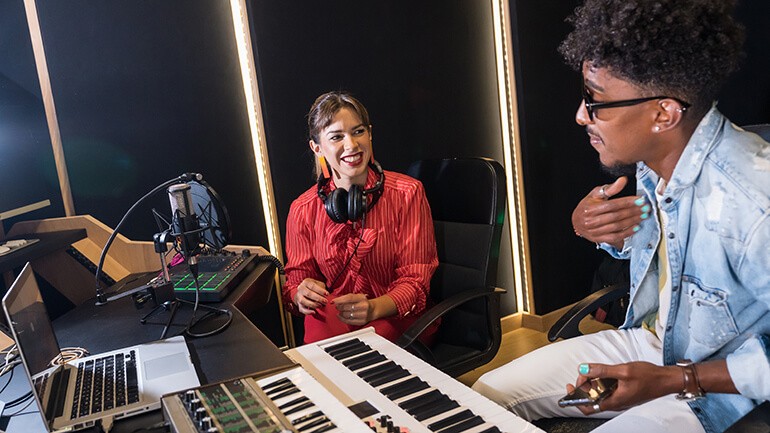5 Suggestions for Productive Tracking Sessions
Taking the time to tune, prioritizing performance over perfection, plus other tips

Sometimes it’s the little things that make the biggest difference in any recording session. To wit, this week we consider a few random yet essential items for promoting order and creativity while demo-making, whether it’s ensuring you’re staying in tune throughout, to knowing when it’s time to call time, and more.
Check your tuning – often. When a recording is going well, the tendency is to keep at it before those fleeting moments of inspiration slip away. Even so, a brief reality check is never a bad idea, especially when it comes to staying in tune. While it is sometimes possible to pitch-adjust an errant guitar or other stringed instrument after the fact, it’s better to avoid such tedium by keeping a clip-on tuner or tuning pedal handy and periodically checking to ensure you’re still at 440Hz. This is particularly important if you’ll be bringing a piano/synthesizer into the mix—unlike a guitar which can fall “in the cracks” (i.e., somewhere just shy of concert pitch), digital keyboards can generally only be adjusted one semi-tone at a time.
Mistakes can be good. A friend of mine once suggested that the best recordings were often the result of something unexpected happening—a guitar solo that went marvelously astray, a muffed bass passage that somehow worked better than the intended part, and so on. When laying down tracks, don’t automatically discard a take just because you made a mistake, especially if you like the overall feel of the performance. Remember, a miscue can always be repaired later on, but that element of spontaneity is a fleeting thing.
Miking by listening. Yes, there is a certain amount of science to microphone placement, such as when using multiple mics, or attempting to deter leakage from a nearby sound source. But if the idea is to find the sweet spot on an amplifier, an acoustic guitar or other instrument, often the best approach is to just use your ears, rather than physics. Simply have someone play while you put your ear in the vicinity of the sound hole or speaker cone; once you’ve located the best position, stick a mic right there and then check to see if the sound through your monitors or headphones matches what you were hearing in the room.
Comfort is key. Years ago, professional studios often looked more like factories than recording facilities, with large-tiled floors, bright fluorescent overhead lighting and technicians who sometimes wore white lab coats (they were “engineers” after all). The idea that comfort informed creativity eventually caught on, and it’s still an important part of the modern studio construct. But there’s more to it than filling your space with lava lamps or Persian rugs—you’ll also want to set up your equipment in a way that encourages workflow. To that end, make sure there’s ample room to move around freely—if you’re just cutting vocals, for instance, clear the area of pedalboards, amps and any other non-essential items, and use strips of gaffer tape to properly secure microphone cables and other audio connectors to the floor.
Know your limits. When chasing after that penultimate take, remember that recording, like other physical activity, requires stamina, patience and, most of all, break time. When singing lead, for example, try to get as much of the main part down early in the process before your vocal cords begin to tire, and also record from beginning to end, rather than line by line (you can always go back and punch-in over any errant bits later on). Even if you’re the type who gets better as you go along, bear in mind that your ears can only handle so much headphone signal, especially if there’s any real volume behind it. Accordingly, save the most hearing-sensitive tasks like vocal overdubs, final mixing, editing and the like for when your ears are completely refreshed, such as first thing in the morning, rather than immediately following a long night of loud tracking.






Community
Connect with BMI & Professional Songwriters